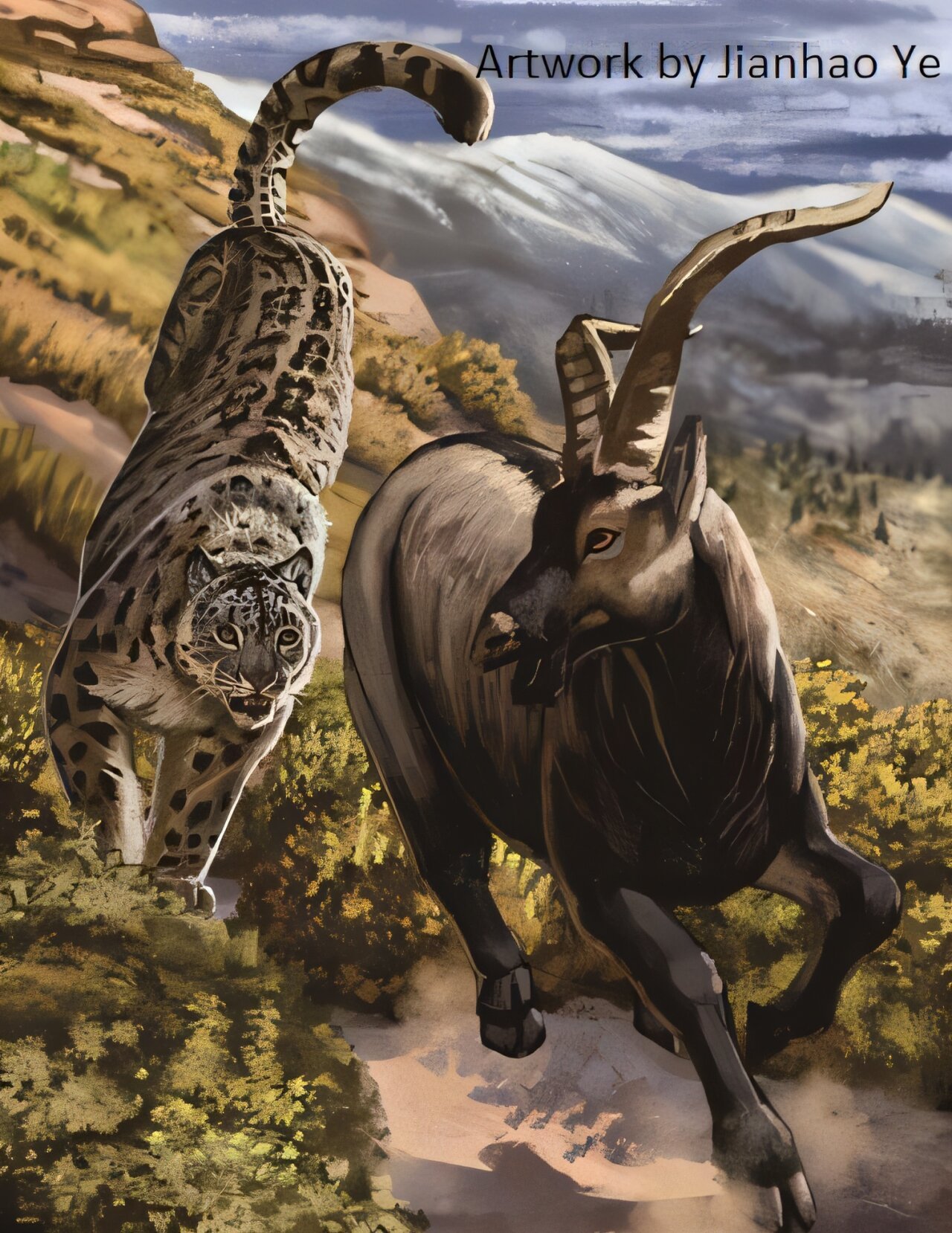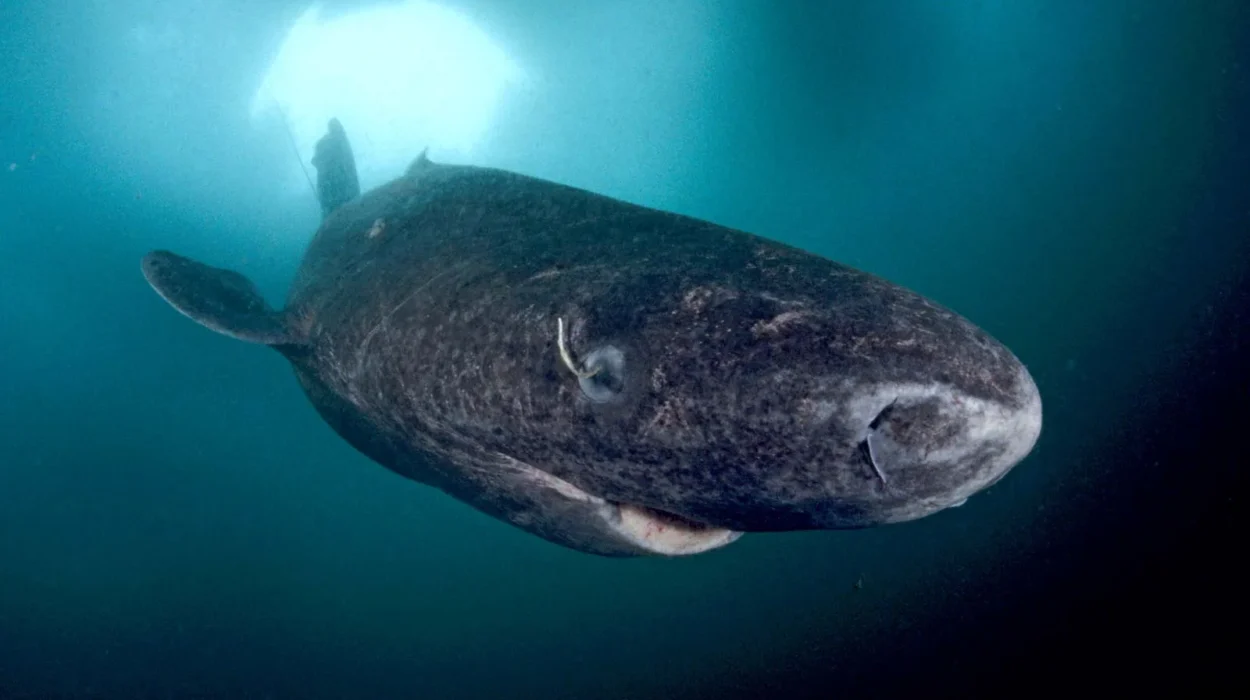For the first time, an international team of scientists has identified snow leopard fossils, shedding light on the evolutionary history of one of the world’s most elusive big cats. Published in Science Advances, the study provides a deeper understanding of how the species has evolved and dispersed, challenging previous assumptions about its habitat preferences and offering new clues for its conservation.
Snow leopards (Panthera uncia), now critically endangered with an estimated 4,000 individuals remaining in the wild, are known for their ability to survive in some of the harshest environments on Earth, primarily in high-altitude mountain ranges. However, until recently, little was understood about their evolutionary origins or the traits that have allowed them to thrive in the rocky, cold environments of the Tibetan Plateau and beyond. The discovery of fossils dating back to 1 million years ago has begun to piece together the species’ evolutionary past, providing crucial insights into its unique adaptations.
Fossils Shed New Light on the Snow Leopard’s Evolution
Despite the snow leopard’s distinctive features and iconic status, the lack of fossil evidence in the Tibetan Plateau and surrounding areas made it difficult to trace its evolutionary history. Until now, scientists had identified possible snow leopard remains in regions like northern China and even Europe, but these had not been fully verified or analyzed within a phylogenetic context. The research team, led by Qigao Jiangzuo from Peking University and Joan Madurell Malapeira from Universitat Autònoma de Barcelona (UAB), reviewed multiple samples assigned to common leopards (Panthera pardus) from Europe and Asia. For the first time, they were able to definitively identify five snow leopard fossils—spanning sites in China, France, and Portugal—that date back to around 1 million years ago.

This groundbreaking discovery has enabled scientists to trace the evolutionary trajectory of snow leopards, allowing them to explore how the species adapted over time to the challenging mountain landscapes of Central and South Asia. Utilizing detailed morphometric and phylogenetic analyses, along with mathematical models, the team was able to model the species’ likely geographic and temporal dispersion.
Snow Leopards Adapted for Rugged Terrain
One of the key aspects of the study is the identification of the snow leopard’s distinct physical traits, which helped scientists better understand how the species evolved and adapted to life in the rugged terrain of the Himalayas. Snow leopards are significantly different from common leopards in their skeletal structure, which is designed to conquer the steep, rocky slopes that are characteristic of their environment. Their skulls are domed, with robust jaws and larger teeth, ideal for hunting and consuming tough, muscular prey like mountain goats. In comparison, common leopards, which live in partially forested habitats, are adapted to hunting more agile prey in open or forested landscapes.


Over the course of the Quaternary period, particularly from the Middle Pleistocene onward, the snow leopard also developed other key traits that helped it survive in its mountainous habitat. Its powerful limbs allow it to withstand steep jumps between rocky ledges, a necessity for navigating the rugged topography of its environment. Additionally, the snow leopard’s tail is longer than that of the common leopard, serving as a counterbalance that enhances its agility and stability on uneven terrain. The species has also evolved enhanced binocular vision and a large ectotympanic structure, which improves its ability to hear over long distances. These traits, scientists suggest, were honed as the species evolved in response to the changing conditions of the Quaternary period.
Interestingly, many of these specialized adaptations appear to have emerged during colder periods, coinciding with the ice ages. These cold phases played a significant role in shaping the snow leopard’s evolutionary path, and this research suggests that the species’ adaptations enabled it to survive not only in high-altitude habitats but also in more diverse cold environments. Notably, it appears that snow leopards’ geographic spread may not have been strictly limited by high altitudes or snow, but rather by the presence of rocky, steep terrain—insights that challenge long-standing assumptions about the snow leopard’s environmental needs.
Surprising Discovery in Western Europe
The study also highlights the discovery of a significant fossil in Porto de Mós, Portugal, known as the “leopard of Algar da Manga Larga.” Found by amateur speleologists in the early 2000s, this fossil was initially assumed to be a common leopard, but recent analysis has confirmed that it is instead a member of the snow leopard lineage. The discovery of this unexpected Western European fossil adds a new layer of complexity to our understanding of the species’ distribution during the Quaternary period.
“We propose that about 900,000 years ago, the intensification of glaciations across Eurasia may have opened up more accessible, steppified habitats, facilitating the spread of snow leopards into Portugal, where they could have lived until around 40,000 years ago,” said Malapeira, co-author of the study. This suggests that snow leopards were not confined to high-altitude, snow-covered mountains, but were capable of thriving in diverse terrains as climatic changes shaped the environment of Eurasia.
These findings have important implications for the conservation of snow leopards. Unlike the earlier hypothesis that snow leopards’ primary habitat requirement is high-altitude, snow-covered regions, this new research emphasizes the species’ preference for rocky and steep terrains, regardless of altitude or temperature. As the world faces increasing climate change, these insights may help conservationists plan more effective strategies to protect snow leopards in their increasingly fragmented habitats.
Implications for Snow Leopard Conservation
The new understanding of snow leopard’s habitat preferences is especially timely given the current threats they face. Their populations have decreased dramatically due to habitat loss, poaching, and the effects of climate change. The results from this study offer hope by suggesting that snow leopards can adapt to environments that may not be as constrained by altitude and snow coverage as previously believed. In regions where mountain ranges are more prone to temperature fluctuations and reduced snowfall, such as parts of Central Asia and the Tibetan Plateau, the species may be able to find refuge in cooler, rocky areas, instead of disappearing from these landscapes altogether.
“Our findings suggest that the survival of snow leopards is less dependent on the presence of snow or extreme altitude and more on the availability of open, steep spaces,” said Malapeira. In light of climate change, this means that certain areas previously considered unsuitable for snow leopards might now support viable populations, provided that conservation efforts prioritize the preservation of the rocky and rugged terrains that these big cats need to thrive.
Looking ahead, future research will expand on these findings, focusing on the neuroanatomy and ecology of the newly discovered fossil in Portugal, which will provide additional insights into the behavior and environmental needs of snow leopards. Understanding their interaction with the ecosystem of Western Europe during the Quaternary period, for example, could offer clues about potential historical migration routes and climatic challenges, further informing conservation strategies.
As scientists continue to uncover more about the evolutionary history and habitat preferences of the snow leopard, the hope is that this new knowledge will lead to a greater understanding of how to ensure the species’ survival in a world that is rapidly changing both environmentally and socially.
Conclusion
The discovery of snow leopard fossils and the subsequent study of their evolutionary history offers significant new insights into the species’ adaptation and distribution. Contrary to earlier assumptions that snow leopards were primarily tied to high altitudes and snowy environments, this research reveals that they thrive in rocky, steep terrains, regardless of altitude or snow. The surprising fossil find in Portugal further expands our understanding of their historical range, showing that snow leopards once roamed across parts of Western Europe. This breakthrough highlights the importance of protecting diverse rocky habitats to ensure the species’ survival in the face of climate change.
Reference: Qigao Jiangzuo et al, Insights on the evolution and adaptation towards high altitude and cold environments in the snow leopard lineage, Science Advances (2025). DOI: 10.1126/sciadv.adp5243. www.science.org/doi/10.1126/sciadv.adp5243






